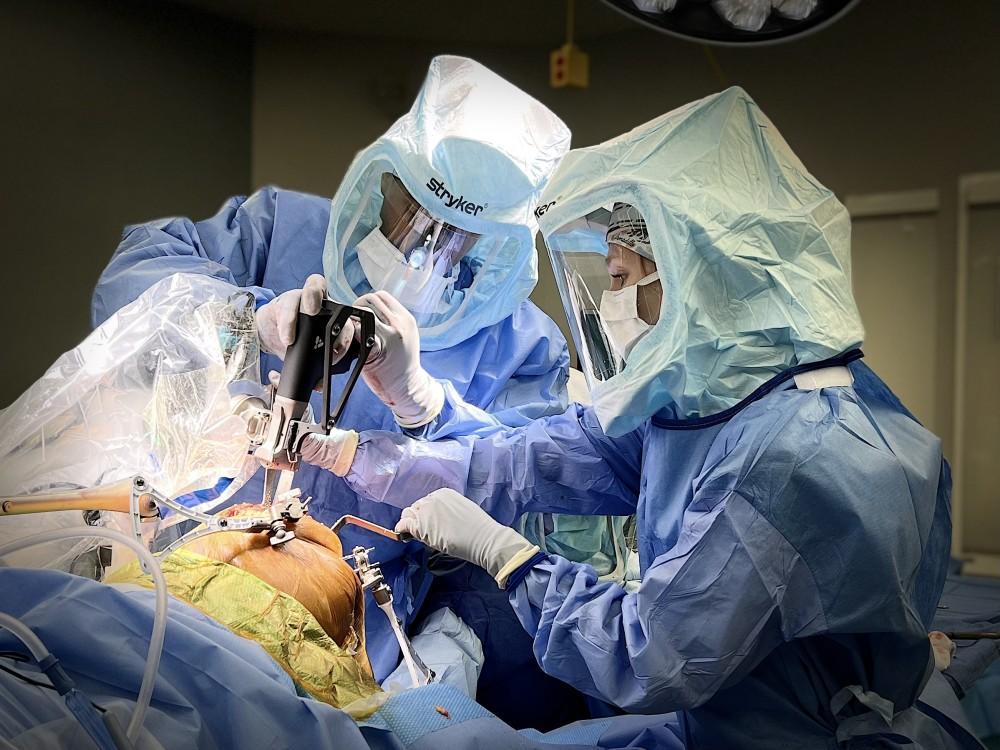
Is Hip Resurfacing Right for Me?

What diagnosis is treated with Hip Resurfacing Surgery?
Hip degeneration occurs when the cartilage of the femur and the hip socket wears away, resulting in bone rubbing on bone and deformity of the joint. For patients that are accustomed to living an active lifestyle this can be very distressing. When non-surgical treatment options fail to improve your pain and function, total hip replacement surgery or hip resurfacing surgery may be recommended. So, what’s the difference?
What is the difference between a Hip Replacement and Hip Resurfacing?
If we apply a dental analogy, when caring for a damaged tooth, a hip resurfacing is like putting a crown or a “cap” to cover the damaged tooth (hip), whereas a hip replacement is like removing that tooth (hip) altogether and replacing it with an artificial one. So, instead of replacing the entire hip as you would for a total hip replacement, in hip resurfacing surgery, only a few millimeters of bone and cartilage are shaved from the joint surface. Thus, the patient ultimately keeps more of their own natural bone with resultant benefits of a lower risk of dislocation and better restoration of your natural hip position.
The benefits of hip resurfacing surgery even allow for patients to return to high level activities such as marathon running and competitive sports at the recreational, professional and even olympic levels. Therefore, it is an attractive option particularly for younger patients that have an interest in returning to such activities. An additional benefit, again for younger patients who may need a revision surgery in their lifetimes is that the revision surgery for hip resurfacing is to convert it to a standard hip replacement. Whereas the revision of a regular hip replacement procedure is more involved.
Who is a candidate for Hip Resurfacing Surgery?
The ideal patient for hip resurfacing surgery is typically a young active patient (around 60 years or less) with strong bone quality. Those that are not good candidates for hip resurfacing surgery typically have problems that compromise their bone quality, such as inflammatory arthritis, avascular necrosis, osteopenia/osteoporosis (which unfortunately excludes many women) and obesity.
What are the complications?
Just like with hip replacement surgery, there are risks involved with hip resurfacing. In fact, there has been a lot of media attention about the potential complications involved with certain hip resurfacing implants. Fracture risk is a concern and typically occurs in patients that have poor bone quality and when the resurfacing implant is not ideally positioned. Also, while the metal-on-metal articulation has been shown to wear out a lot slower than the metal-on-plastic which is used for regular hip replacements, the metal hip resurfacing implants do release metal ions into the body as they wear. In the vast majority of patients, the metal ion levels in the body is exceedingly low and result in no medical problems. Metal ions are closely tied to correct positioning of the implant in the patient, therefore, surgeon technique is critical in obtaining a good result. In patients that have had well positioned implants for 15 years, only 1% of patients will have high metal ion levels.
How long is the recovery?
Most of my patients begin walking just a few hours after their operation and they typically stay just one night in the hospital. You will likely need a walker or crutches for the first few days or weeks after surgery until you become comfortable walking without assistance. Since the hip resurfacing surgery is more stable than a regular hip replacement, you will have no post-operative hip precautions. The best exercises to do during the first few weeks after surgery is walking and gentle stretching. Some patients begin stationary bike work after a week or two. Swimming and pool exercises can begin once the incision is completely healed and more rigorous activities such as jogging and competitive sports begins after 3-6 months depending on the sport.
Hip resurfacing surgery is an excellent surgical choice for patients with severe hip arthritis that meet the qualifications. The procedure has more than 2 decades of research supporting its use when performed by an expert surgeon. Don’t hesitate to contact us for more information1
Dr. Ugo Ihekweazu, is an orthopedic surgeon and an expert in Hip and Knee Replacement surgery in the Greater Houston Area. Dr. Ihekweazu is a member of the Fondren Orthopedic Group with offices in the Texas Medical Center, and Willowbrook/Cypress. Dr. Ihekweazu has particular expertise in minimally invasive anterior and posterior total hip replacement surgery, hip resurfacing, partial knee replacement, minimally invasive total knee replacement surgery, computer navigation, robotic-assisted surgery, complex joint replacement and revision joint replacement surgery. If you have further questions about any of these surgical options please contact us today to make an appointment.
You Might Also Enjoy...


Robotic-Assisted Knee Replacement Surgery

100 Velys Robotic-Assisted Knee Replacement Surgeries

Texas Orthopedic Association Annual Meeting

DePuy Velys Robotic Assisted Knee Replacement Surgery



